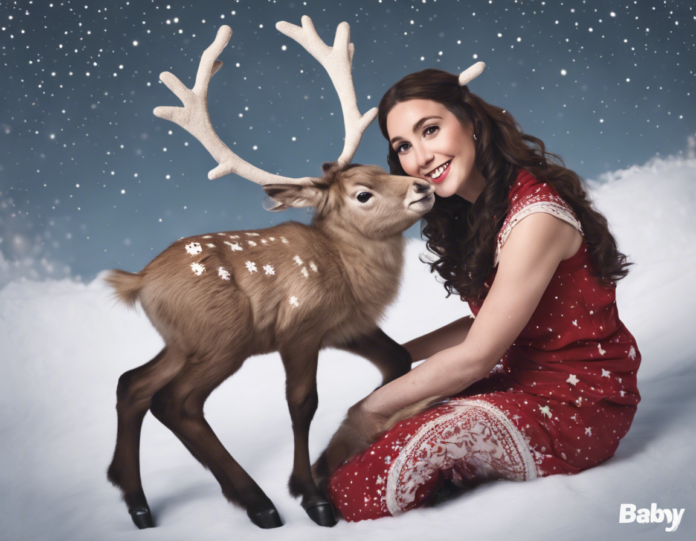Introduction
When we think of reindeer, we often conjure up images of Santa’s trusted companions, pulling his sleigh through the snowy night sky. However, beyond their festive roles, reindeer are fascinating creatures with intricate social structures and behaviors. In the animal kingdom, gender roles and identities can sometimes be more complex than we initially perceive. In this article, we will delve into the intriguing topic of gender identity in reindeer, specifically focusing on the unique case of a baby reindeer trans woman.
Reindeer Social Dynamics
Reindeer, also known as caribou in North America, are part of the deer family and are primarily found in arctic, subarctic, and mountainous regions. These majestic creatures typically live in herds and exhibit a matriarchal social structure, where females take the lead in decision-making and herd management.
In reindeer society, gender roles are not as rigidly defined as in human cultures. While male reindeer, known as bulls, may engage in displays of dominance and competition during the mating season, it is the female reindeer, known as cows, that hold significant power within the herd. Cows form strong bonds with each other and work together to protect and nurture their offspring.
Gender Identity in Reindeer
Gender identity in reindeer is a complex and multifaceted concept that goes beyond traditional binary classifications. While bulls and cows play distinct roles within the herd, there are instances where individuals may exhibit behavior that challenges these conventional norms.
In the case of our baby reindeer, who we will refer to as Luna, observers have noted behavior that aligns more closely with the social norms and behaviors typically associated with female reindeer. From a young age, Luna displayed a preference for forming bonds with female reindeer and engaging in nurturing behaviors towards younger members of the herd.
As Luna matured, her preference for feminine social roles became more pronounced, leading some researchers to describe her as a trans woman within the context of reindeer society. This term, borrowed from human language, serves as a way to conceptualize Luna’s unique gender identity and her deviation from the traditional gender roles observed in male reindeer.
Challenges and Acceptance
In human society, individuals who identify as transgender often face challenges related to social acceptance, discrimination, and access to healthcare. While the concept of gender identity may not directly translate to the experiences of reindeer, Luna’s journey raises important questions about acceptance and understanding within animal communities.
One of the key observations in Luna’s story is the acceptance she has found within her herd. Despite exhibiting behaviors that differ from those of typical male reindeer, Luna has been embraced by her fellow herd members, particularly the cows who see her as a valued member of their social group.
This acceptance highlights the resilience and adaptability of reindeer society in accommodating individuals who may not fit neatly into traditional gender roles. Rather than ostracizing Luna for her unique behaviors, the herd has integrated her into their social fabric, recognizing the importance of her contributions to the group.
Implications for Understanding Gender
The case of Luna, the baby reindeer trans woman, offers a compelling lens through which to examine the diversity of gender identities in the animal kingdom. While human concepts of gender may not directly map onto reindeer behavior, Luna’s story challenges us to rethink traditional notions of gender roles and identity.
By acknowledging and celebrating the complexity of gender expression in all species, we open up new avenues for understanding and acceptance. Luna’s journey reminds us of the importance of empathy, respect, and inclusivity in recognizing and honoring the diversity of gender identities in the natural world.
FAQs:
- Do reindeer have gender roles in their society?
-
While reindeer do exhibit certain gender roles, such as bulls engaging in dominance displays and cows taking the lead in herd management, these roles are not as rigidly defined as in some human societies.
-
Can reindeer exhibit behaviors that challenge traditional gender norms?
-
Yes, there are instances where individual reindeer may display behaviors that deviate from traditional gender norms, such as a male reindeer exhibiting nurturing behaviors typically associated with females.
-
How do reindeer herd members react to individuals with non-conforming gender identities?
-
In some cases, as observed with Luna the baby reindeer trans woman, herd members may accept and embrace individuals with non-conforming gender identities, recognizing the value they bring to the group.
-
Is the concept of transgender identity applicable to animals like reindeer?
-
While the term “transgender” is a human construct, it can be used descriptively to conceptualize non-traditional gender identities observed in animals, such as the case of Luna, the baby reindeer trans woman.
-
What can we learn from Luna’s story about gender diversity in the natural world?
- Luna’s story serves as a reminder of the diversity of gender expressions and identities that exist in the animal kingdom, challenging us to broaden our understanding of gender beyond binary classifications.






